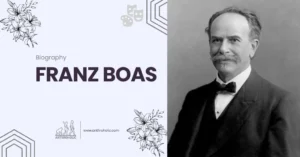AI Answer Evaluation Platform Live Now. Try Free Answer Evaluation Now
Tradition in Archaeology
Tradition in archaeology provides a pivotal lens through which to view, analyze, and understand human history. Archaeological traditions refer to the continuities in artifact design and customs passed down through generations, reflecting cultural values, identities, and practices [1].

The Concept of Tradition
Traditions in archaeology can be broadly divided into two types: the perceived tradition and the archaeological tradition.
- Perceived Tradition: These are the traditions that have been passed down through generations, as viewed from the perspective of the culture itself. These are often oral histories, rituals, practices, and artisan techniques that define a group’s cultural identity [2].
- Archaeological Tradition: Archaeologists often use this term to describe visible, material evidence of recurring cultural practices. These are detectable patterns or traits in archaeological sites, artifacts, and structures that reflect cultural continuities over time [3].
Tracing Tradition Through Artifacts
Artifacts and architecture often embody cultural traditions. By examining changes and continuities in design, materials, and technique, archaeologists can infer cultural shifts, contacts, and adaptations [4].
Ceramic Traditions
Ceramic artifacts hold significant value in understanding traditions, as their designs often depict prevailing customs and beliefs. For example, the potter’s wheel’s introduction to ancient Mesopotamia around 3500 BC resulted in pottery forms that remain consistent for centuries, reflecting a strong tradition in the region.
Architectural Traditions
Architectural structures and styles, too, provide insights into past traditions. The pyramid structures of Egypt, for instance, represent a deeply ingrained funerary tradition linked with the religious belief in afterlife.
Tables of Key Archaeological Traditions
| Region | Time Period | Key Tradition | Primary Evidence |
|---|---|---|---|
| Mesopotamia | 3500 BC | Pottery Tradition | Ceramic Artifacts |
| Egypt | 2700-2200 BC | Pyramid Construction | Architectural Remains |
| Greece | 800-500 BC | Amphora Production | Ceramic Vessels |
| China | 1300-221 BC | Bronze Casting | Bronze Artifacts |
Understanding Societies Through Tradition
Traditions not only offer insights into material culture but also provide a window into a society’s economic, political, and religious systems. The tradition of monumental architecture, for instance, often indicates a society with enough resources for large-scale constructions, hinting at a complex socio-political structure.
Challenges in Interpreting Tradition
Tradition interpretation in archaeology is not without its challenges. They include:
- Dating Artifacts: Establishing accurate dates for artifacts is critical for understanding tradition. However, dating methods, such as radiocarbon dating, may not always yield precise results.
- Understanding Cultural Contact: Traditions can change or evolve due to cultural contact. Discerning whether changes in artifacts result from internal evolution or external influence can be challenging.
- Survival Bias: Not all materials survive equally over time. Biodegradable materials like wood or textiles, which could have embodied important traditions, often decay, skewing our understanding of the past.
Conclusion
Traditions play a pivotal role in archaeological studies, providing valuable insights into past societies’ cultures and ways of life. However, the interpretation of these traditions requires careful analysis and consideration of various factors. Despite the challenges, the study of tradition remains a cornerstone in our quest to understand our shared human history.
References
[1] Hodder, I. (1982). The Identification and Interpretation of Ranking in Prehistory: A Contextual Perspective.
[2] Shennan, S. (1989). Introduction: Archaeological Approaches to Cultural Identity.
[3] Whallon, R. (1972). Tradition and Direction in Hopewell Research.
[4] Plog, F. (1983). Analysis and interpretation of artifact stylistic variability.




